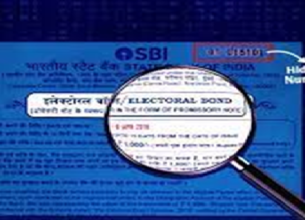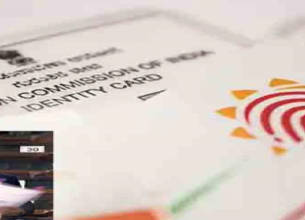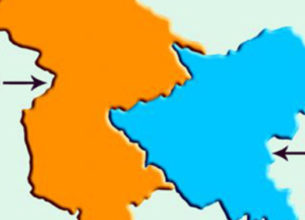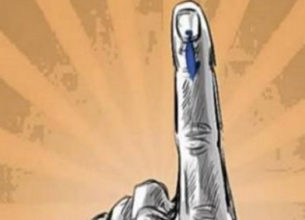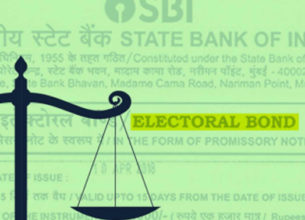SC to consider hearing PIL challenging use of EVMs in polls
20, Jan 2022
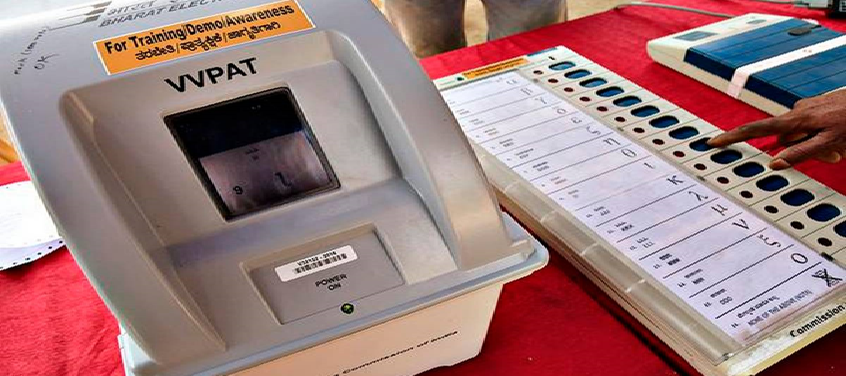
Prelims level : Election & Electoral Reforms
Mains level : GS-II Structure, Organization and Functioning of the Executive and the Judiciary Ministries and Departments of the Government; pressure groups and formal/Informal Associations and their role in the Polity.
Why in News?
- The Supreme Court recently agreed to consider listing a PIL challenging the constitutional validity of a provision of the Representation of People Act which had led to the Introduction of Electronic Voting Machines (EVMs) in elections.
What does the Petition Say?
- Section 61A of the Representation of People Act, which permitted the use of EVMs, was not passed by Parliament and hence cannot be imposed. The petition wants the provision to be declared null and void.
What is an EVM?
- The Electronic Voting Machine, also known as EVM, is an electronic device used for casting votes. The EVM aims to make the electoral process secure, fair and transparent.
- The voting in India is done using electronic voting machines since 1999 to simplify the voting Process and do Away with Paper Ballots.
Can EVMs be Tampered With?
- The EVM is a tamper-proof machine. It is made of a one-time programmable chip, which cannot be connected to any external device or network such as the internet, Wi-Fi, USB or Bluetooth. Hence, it cannot be corrupted or Modified in any way possible.
What is the Process of Allotment of EVMS to Polling Booths?
- The EVMS are allotted to the polling booths through an elaborated randomization process. This way, there is no prior knowledge on which unit will go to which polling booth almost until the polling date. The machines undergo mock polls at every stage to ensure that they are in the right working condition.
How do the EVMS work?
- An EVM is designed with two units: the control unit and the balloting unit. These units are joined together by a cable.
- While the control unit of the EVM is kept with the presiding officer or the polling officer, the balloting unit is kept within the voting compartment for electors to cast their votes. This is done to ensure that the polling officer verifies your identity.
How to use an EVM?
- In order to enable the voter to cast their vote, the polling officer instead of issuing a ballot paper presses the ballot button. The balloting unit of the machine will have a list of candidate names and party symbols with a blue button next to it. The voter can press the button next to the candidate’s name they wish to vote for.
- When the Voter presses a button of his/ her choice, the machine locks itself and a printed VVPAT slip is displayed for 7 seconds before it’s automatically cut and delivered to a sealed ballot compartment. The votes are stored in the VVPAT or Voter Verifiable Paper Audit Trail machine.
- The EVM can then be opened only with a new ballot number. This way, EVMs ensure that one person gets to vote only once.
About VVPATs:
- VVPAT is a slip generated in a printer-like machine attached to EVM and shows voter’s choice of candidate as well as the party. Generated slip is displayed for a few seconds to the voter to verify before it falls into a sealed drop box which can be opened during counting.
- Advantages: Initially, election results are announced based on the recording of votes given by EVMs. If the election results are disputed, then the votes recorded under VVPATs shall be counted and announced. If there is any mismatch between the two results, then the VVPAT’s result will prevail over the EVMs.
- Disadvantages: However, VVPATs address only the issues at the voting part and the counting part still stays an opaque operation.
- Furthermore, currently, the EC’s VVPAT auditing is limited to one randomly selected polling booth per constituency. But, this sample size will not detect faulty EVMs 98-99 percent of the time.
- VVPATs can be an effective deterrent to fraud, but, the detection of even one faulty EVM in a constituency is followed by the VVPAT auditing of all the EVMs (at all booths) in that constituency = poses a serious logistical challenge and hence VVPATs are not the solution to counting Level Failures.
Why are EVMs used in India?
- The electronic voting machine came in India as a replacement to ballot papers and was first used in No. 70 Parvur assembly constituency in Kerala in 1982.
- In a large scale, the machines have been in use in India since 1999. The machines have been credited with making the voting process simpler, as now vote can be registered with just a click on the button.
- The machines are also cost-effective in the long run. Although the initial cost of an EVM is between Rs 5,000 and Rs 6,000, the machine, on an average, lasts for 15 years.
- Further, the machines run on batteries and hence don’t require electricity. They are also lighter and easily portable compared to the huge ballot boxes.
- The machines also make vote counting process faster, delivering results within hours as against Manual Counting of votes which could take days.



